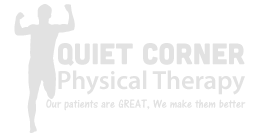
Working From Home Can Lead To Upper Cross Syndrome
In the wake of the COVID-19 pandemic, the concept of remote work has gained immense popularity. While working from home offers numerous benefits like flexibility, comfort, and saving time and money spent on commuting, it also has its downsides. One of the biggest disadvantages of working from home is the negative impact it can have on our body ergonomics, leading to Upper Cross Syndrome.
Body ergonomics is the study of how we work and interact with our environment, including our posture, movements, and interactions with our work tools. It is crucial to maintaining our health and avoiding injuries and chronic conditions. Upper Cross Syndrome is a type of posture disorder that occurs when the muscles in the neck, chest, and shoulders become weak or overstretched, while the muscles in the upper back and neck become tight and overactive. Working from home often means working in a suboptimal ergonomic setup, leading to poor posture and muscle imbalances.
Here are some of the ways in which working from home can negatively impact your body ergonomics and lead to Upper Cross Syndrome:
- Poor Posture: When working from home, it’s easy to find yourself slouching or leaning over your computer screen, especially if you’re working from a couch or bed. Over time, this can lead to a hunched back, forward head posture, and tight chest muscles, leading to Upper Cross Syndrome.
- Inadequate Desk Setup: Many people do not have a dedicated workspace or a proper desk and chair setup at home. This can lead to improper alignment of the spine and poor ergonomics, putting a strain on the neck, shoulders, and back muscles.
- Sedentary Lifestyle: Working from home means we’re not moving around as much as we would in an office environment, leading to a more sedentary lifestyle. This lack of physical activity can cause muscle imbalances, leading to Upper Cross Syndrome.
- Repetitive Strain Injuries: When working from home, we tend to spend more time on our computers or laptops. Repetitive use of a keyboard and mouse can lead to overuse injuries, such as carpal tunnel syndrome or tendonitis, leading to poor body ergonomics.
- Lack of Social Interaction: Working from home can be isolating and lead to stress and anxiety. Stress can cause muscle tension, leading to poor posture and muscle imbalances, contributing to Upper Cross Syndrome.
So, what can you do to improve your body ergonomics when working from home? Here are some tips:
- Proper Desk Setup: Invest in a proper desk and chair that allows you to sit with your feet flat on the ground, your back straight, and your arms resting comfortably on the desk. Adjust the height of the monitor to eye level to avoid hunching forward.
- Take Frequent Breaks: Make sure to take frequent breaks throughout the day to stand up, stretch, and move around. This will help prevent muscle tension and improve blood flow to your muscles.
- Exercise Regularly: Incorporate regular physical activity into your routine, such as yoga or strength training. This will help strengthen your muscles and improve your posture.
- Practice Mindfulness: Take breaks throughout the day to practice mindfulness or meditation. This will help reduce stress and tension in your muscles.
- Seek Professional Help: If you’re experiencing pain or discomfort, seek help from a healthcare professional or an ergonomics specialist. They can provide you with personalized advice and guidance to improve your body ergonomics.
If you are in need of physical therapy or rehab to fix your Upper Cross Syndrome , please contact our office today to set up an appointment on a day and time that’s convenient for you.
There are many things that make Quiet Corner Physical Therapy different. First and foremost, our dedicated staff is completely devoted to making your physical therapy experience as easy and enjoyable as possible. We pride ourselves on providing each and every one of our patients with industry leading individualized care and treatment plans. The number one concern of our compassionate staff is your well-being. Quiet Corner has the unique ability to utilize the most effective treatment techniques and services including cupping, paraffin, dry needling, mobility tools, E-stim, TENS, taping, traction, and joint/soft tissue mobilization just to name a few.


